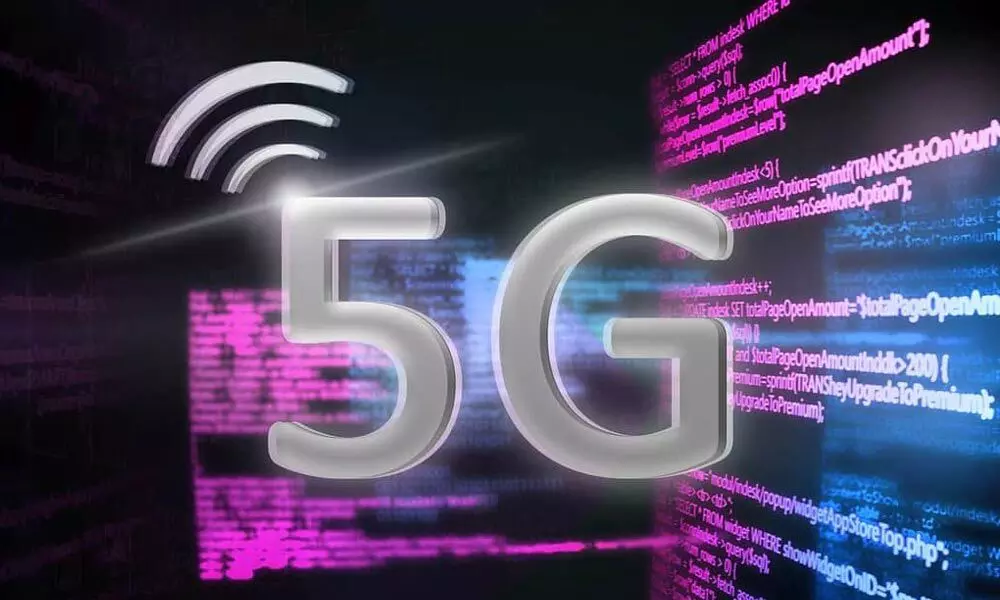Is net neutrality a stumbling block to 5G?
Up to 30% of 5G use cases are expected to require network slicing in future. This feature is difficult to exploit if the net neutrality principle stays
image for illustrative purpose

Network neutrality
The right to receive and impart information in a non-discriminatory manner is crucial in the online world. 'Net neutrality' ensures autonomy and prevents the segmentation of the internet. This is a concept that Internet Service Providers (ISPs) must treat all the available data that travels via their network fairly without any improper discrimination.
They can't favour one particular application, website or service over another. It guarantees the openness of the internet by assuring non discrimination of users.
This principle ensures innovation, promotes competition and guarantees the implementation of human rights online.
Role of network slicing in 5G implementation
Considering the pace at which the country is undergoing a digital revolution, the launch of 5G becomes critical in the successful adoption of industry 4.0 as it requires real time communication and processing of data through a connected network of things which is only possible through a 5G network. 5G, a disruptive innovation, provides its users with a 'fibre like' internet experience. Unique features of 5G like network slicing, low latency etc., can be realised only if 5G is implemented with Stand Alone (SA) architecture with independent 5G core (separate from the 4G core).
Network slicing is gaining momentum as an enabler for new 5G services and market opportunities. Network slicing creates multiple virtual networks across a single infrastructure or 'Network of networks'. It divides radio waves into separate segments where each segment has a different characteristic and is separate from the others. It will be enabled by the introduction of Network Functions Virtualisation (NFV) and Software Defined Networks (SDN). It allows each virtual network to be used for different traffic or applications. Slices for voice will be engineered to minimise latency. Video stream slices employ larger packets and allow buffering. For conducting a robotic surgery, an ultra reliable slice of band width with low latency will be used. These network slices, typically one for each kind of service, are completely separated and independent to the extent that if something goes wrong in one slice it will not affect the other slice. This separation and independence also enables us to add new slices without impacting the rest of the network. For example we can use a slice of the network for a fully private network such as a power grid that needs a dedicated and secure environment. Each logical network is designed to serve a defined business purpose and comprises all the required network resources which are configured and connected end to end. This allows a tremendous amount of network flexibility and the ability to handle complex, multi-layered tasks simultaneously, opening up a wide range of possibilities across the industry (such as smart manufacturing) and for the consumers (real time personal health networks, smart home services etc.). Network slicing will push the telecommunication industry to new heights.
Collision of policy and technology
Up to 30 per cent of 5G use cases are expected to require network slicing in future. This feature is difficult to exploit if the net neutrality principle stays. While the principle of net neutrality is legally secure in many countries, the emergence of 5G technology will create obstacles to the preservation of net neutrality. TRAI has backed the principle of an open and free internet. It also recommended that Internet of things (IOT) should not be excluded from the scope of restrictions on non discriminatory treatment. However certain crucial services such as remote health care diagnostics, self driving cars etc must be exempted from these rules as per TRAI. As per DOT, net neutrality rules apply equally to 5G as well because the principles are technology neutral. It is anticipated that TRAI/DOT will formulate suitable policies to support Network slicing in 5G before launch of the 5G service to remove any ambiguity on this issue.
(The author is a former Advisor, Department of Telecommunications (DoT), Government of India)

